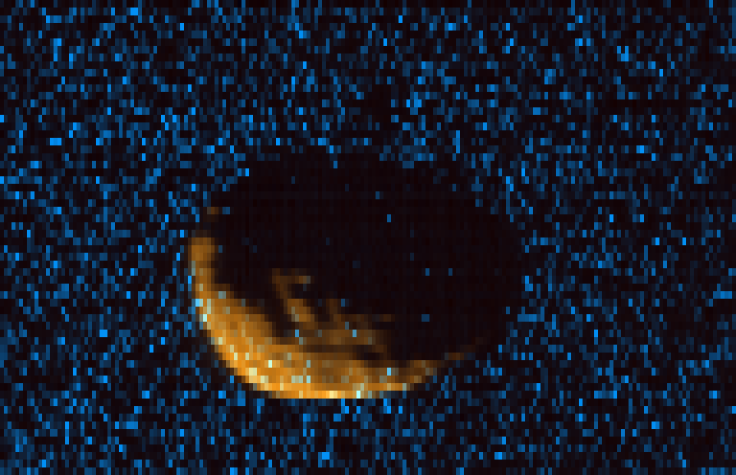Mystery Of Mars Moon Phobos May Soon Be Solved With Latest NASA MAVEN Data

NASA's Mars Atmosphere and Volatile Evolution (MAVEN) mission spent the last two months of 2015 observing Phobos, Mars' strange moon of unknown origin. NASA released a new image of Phobos captured in ultraviolet Monday. Researchers can use the MAVEN data to potentially solve the mystery of how Phobos was formed.
MAVEN's Imaging Ultraviolet Spectrograph was used to create the latest image of Phobos. The instrument detects light reflected from different material in mid-ultraviolet light and far ultraviolet light. Based on the reflected light, researchers can determine a possible origin for the moon. If Phobos contains molecules that are similar to those found on asteroids, for example, that could indicate the moon was once an asteroid that was captured by Mars.
The formation of Mars' two moons, Phobos and Deimos, remains a mystery. One leading theory regarding Phobos' creation is similar to how Earth's moon was formed. The Giant Impact Hypothesis states the moon formed shortly after Earth was formed 4.5 billion years ago when a large object, roughly the size of Mars, collided with our planet. The ejected material combined quickly after the impact to form the moon.
Researchers using data from the European Space Agency's Mars Express spacecraft determined Phobos may have formed in a similar fashion. Minerals found on Phobos are similar to those on Mars. The moon's density is lower than that of a typical asteroid, casting further doubt on the captured asteroid theory. While the evidence strongly points to a Martian origin, researchers have not ruled out the theory Phobos was once an asteroid.
Phobos, the larger of the two moons, is irregularly sized with a crater-covered surface. Phobos orbits Mars at a distance of 3,700 miles from the red planet's surface. Deimos is located further away from Mars and takes 30 hours to orbit the planet. Phobos orbits Mars three times each day.
The moon is doomed, ultimately. Mars is slowy tearing Phobos apart. In 20 million to 40 million years, Phobos could end up as a temporary ring around Mars before crashing to the planet's surface.
© Copyright IBTimes 2024. All rights reserved.






















